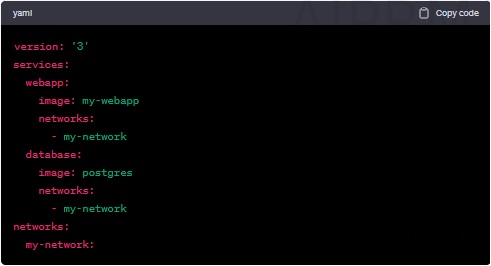Introduction
In the world of containerization, Docker has revolutionized the way software applications are developed, shipped, and deployed. One of the key aspects of Docker’s power lies in its ability to interconnect various containers seamlessly using Docker Compose. In this comprehensive guide, we will walk you through the ins and outs of setting up a Docker Compose network that ensures smooth communication between containers. Whether you’re a seasoned developer or just diving into the world of containers, our step-by-step approach will equip you with the knowledge and expertise to connect containers the right way.
Table of Contents
Docker Compose Network Setup: Connecting Containers the Right Way
Docker Compose simplifies the management of multi-container applications by allowing you to define your app’s services, networks, and volumes in a single docker-compose.yml file. This eliminates the complexities of manually configuring networks and ensures efficient communication between containers.
Understanding Docker Networking
Before diving into the setup process, it’s crucial to grasp the fundamentals of Docker networking. Docker employs a variety of network drivers, each with its own use case. Bridge networks are the default and are suitable for most applications. Host networks offer maximum performance but sacrifice container isolation. Overlay networks, on the other hand, are designed for multi-host communication. Depending on your project’s requirements, you can choose the appropriate network driver.
Writing the Docker Compose File
The heart of your Docker Compose network setup lies in the docker-compose.yml file. This YAML-based configuration file defines your application’s services, networks, and volumes. Each service corresponds to a container, while networks facilitate communication between these containers. Volumes ensure persistent data storage even when containers are replaced. Below is a simplified example of a docker-compose.yml file for a web application and database:

Creating Custom Networks
To enhance container communication and security, Docker Compose allows you to create custom networks. This segregation prevents containers from different projects interfering with each other. You can create a custom network by adding a networks section to your docker-compose.yml file, as shown in the previous example.
Connecting Containers Across Networks
While containers within the same network can communicate effortlessly, there might be instances when you need to establish communication between containers on different networks. Docker Compose facilitates this by enabling containers to join multiple networks. This is especially useful when components of your application need to interact while maintaining network isolation.
Ensuring Network Security
Security is paramount in today’s digital landscape. Docker Compose provides features such as network segmentation and firewall rules to bolster your network’s security. By employing bridge networks, you create a barrier that isolates containers from external threats. Additionally, you can apply firewall rules to control inbound and outbound traffic, ensuring only authorized communication.
FAQs
How does Docker Compose differ from Docker Swarm?
Docker Compose is primarily used for defining and managing multi-container applications on a single host. Docker Swarm, on the other hand, is an orchestration tool used to manage multi-container applications across a cluster of Docker hosts.
Can I use Docker Compose to manage networks in a production environment?
While Docker Compose is excellent for local development and testing, it’s recommended to use more robust tools like Kubernetes for managing networks in production environments. Kubernetes offers advanced networking features and greater scalability.
How do I troubleshoot network communication issues between containers?
If you’re facing communication problems between containers, first ensure that they are connected to the same network. Double-check your docker-compose.yml file for any typos or misconfigurations. You can also use the docker exec command to access a container and perform network-related diagnostics.
Is it possible to create a network that spans multiple hosts?
Yes, Docker provides overlay networks that allow containers to communicate across multiple hosts. This is particularly useful for scenarios where you have containers distributed across different machines.
Can I modify network configurations without restarting containers?
Yes, Docker Compose allows you to modify network configurations without restarting containers. Simply update your docker-compose.yml file and execute the docker-compose up command with the --no-recreate flag.
How can I ensure secure communication between containers?
To ensure secure communication between containers, it’s advisable to use encrypted communication protocols such as HTTPS. Additionally, you can configure firewall rules and network policies to restrict unauthorized access.
Conclusion
Efficiently connecting containers is a cornerstone of successful containerization. With Docker Compose, you have a powerful tool at your disposal to achieve seamless communication between containers. By understanding the fundamentals of Docker networking, crafting a well-structured docker-compose.yml file, and leveraging custom networks, you can build robust and secure containerized applications. So go ahead, experiment, and embrace the world of Docker Compose networking to take your application deployment to the next level.

1 thought on “Docker Compose Network Setup: Connecting Containers the Right Way”
Comments are closed.